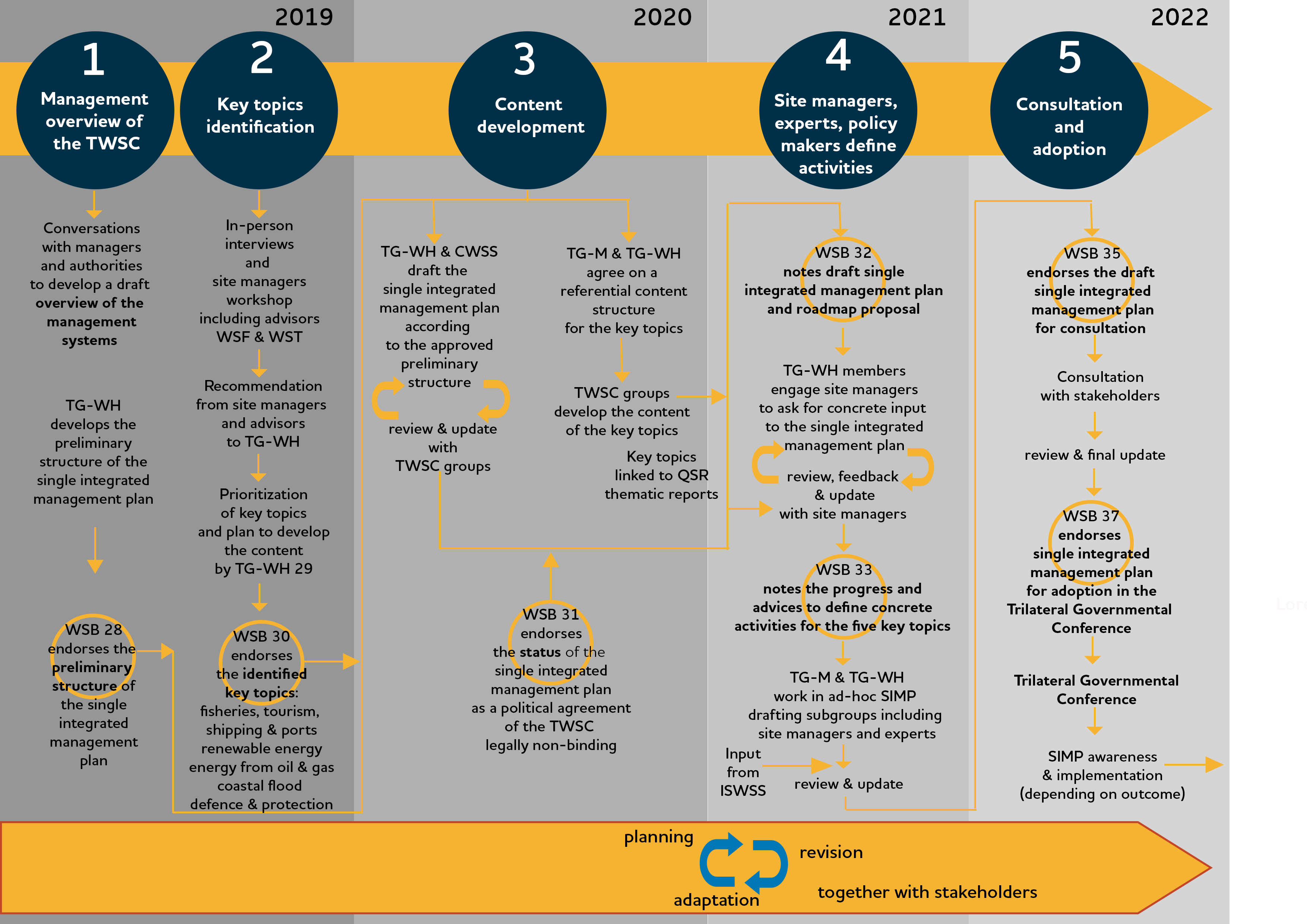Iterative and participatory nature conservation planning process (site management and policy levels)
SIMP development process
Common Wadden Sea Secretariat
The purpose is to achieve a successful transboundary management plan integrating the levels needed for effective management. An exercise to imagine what would make the SIMP a success was useful to manage expectations, and guide and adapt the process.
- Preparatory phase: the trilateral Task Group World Heritage, overseeing the SIMP development, agreed on the purpose to improve management coordination at the trilateral level. Considering the suggestions from site management and policy levels and the Operational Guidelines for the implementation of the World Heritage Convention, a roadmap and content were agreed upon.
- The content development in the TWSC: draws upon the existing governance of the cooperation. The working groups supported the drafting of the SIMP’s content in regard to climate change effects and adaptation, education, sustainable tourism, research, monitoring, assessment, etc. Preliminary content was iteratively reviewed and enriched by the TWSC groups, the site managers, the trilateral Task Group World Heritage, and the Wadden Sea Board.
- Consultation beyond the TWSC: external stakeholders, and members of advisory boards in each of the German Federal States, Denmark, and the Netherlands, reviewed and commented on the draft SIMP.
A similar process is foreseen for assessing the progress and adapting activities.
- The existing governance structure of the TWSC includes working groups on relevant topics to the Wadden Sea World Heritage and therefore the single integrated management plan (SIMP). The mandate to develop the SIMP (involving site management and policy level) was given in the Trilateral Governmental Declaration as a response to the request of the World Heritage Committee.
- Existing engagement of the Task Group World Heritage.
- Resources commitment from the parties and an additional staff member in CWSS as SIMP project officer.
- Give enough time for participation: take into account that each country has its own participation habits and structures and that each involved group has its own rhythm and processes to follow. Learn about those and integrate these the best as possible.
- Plan for discussions among the involved parties: some aspects require more time and background information to understand positions and propose solutions. The Trilateral Task Group World Heritage was a great platform with members that are the liaison to the policy and site management level.
- Effective, easy, tailored communication is key at all levels and all phases in order to convey the key messages. Here we learned along the way and improved but more improvement is possible.

